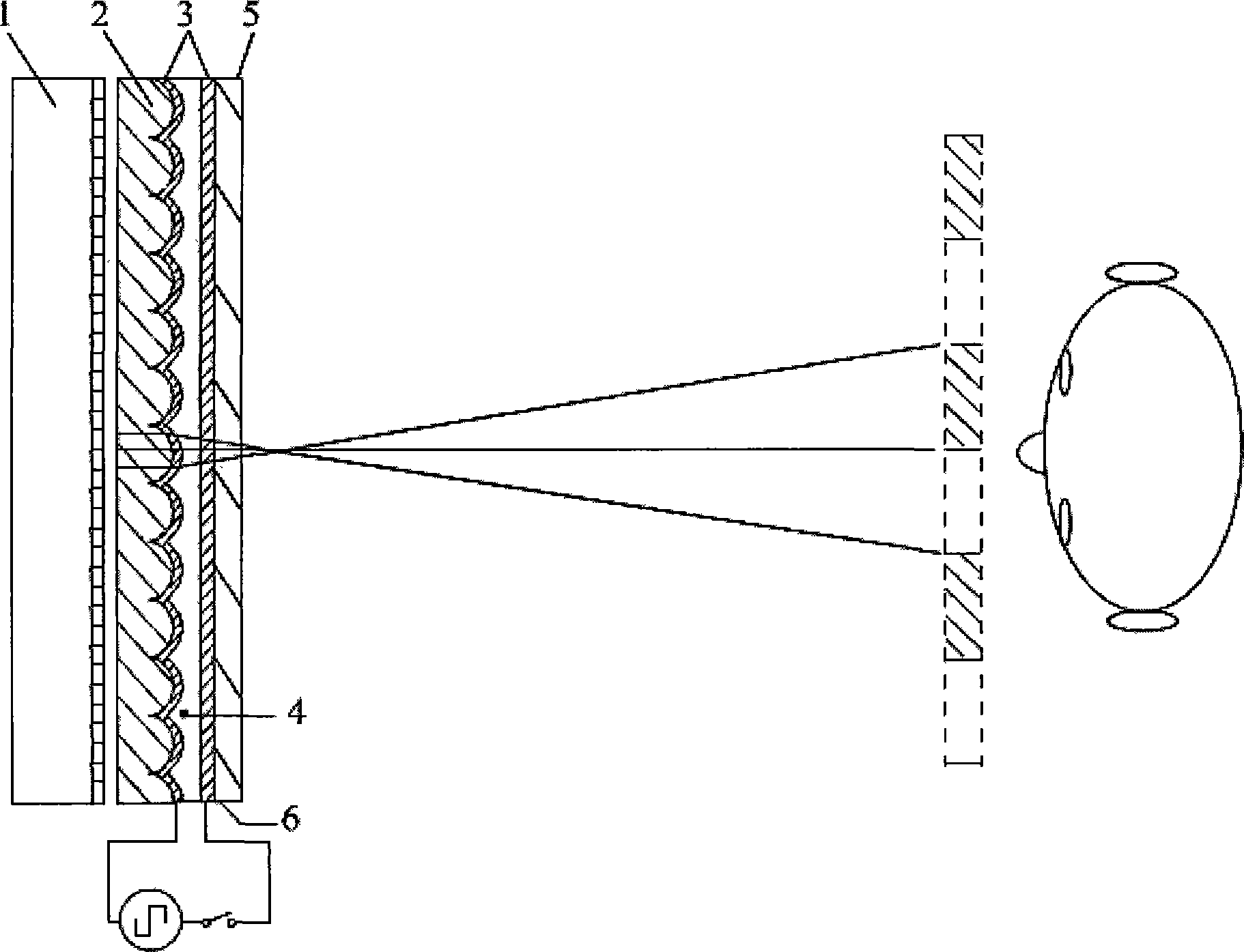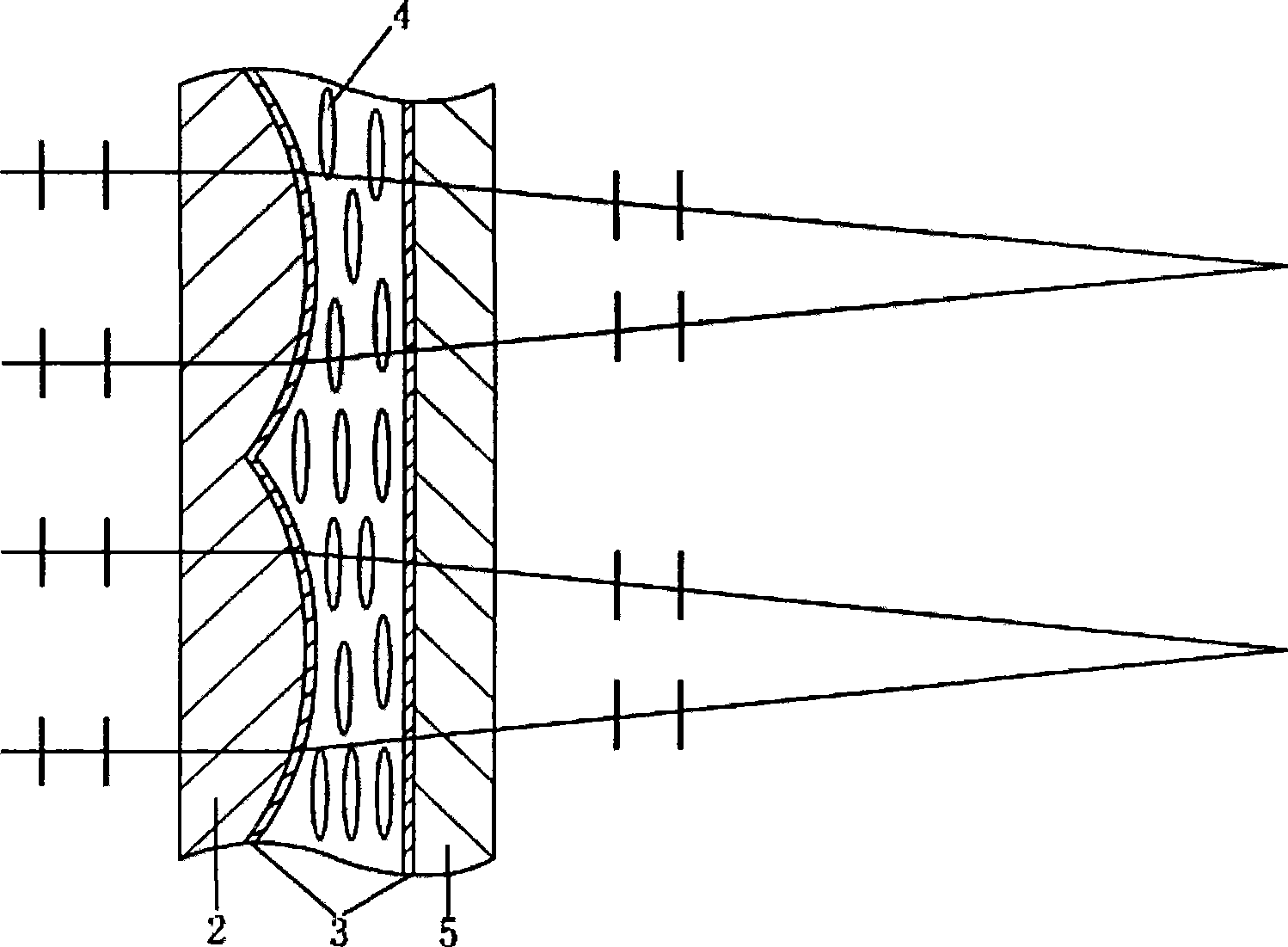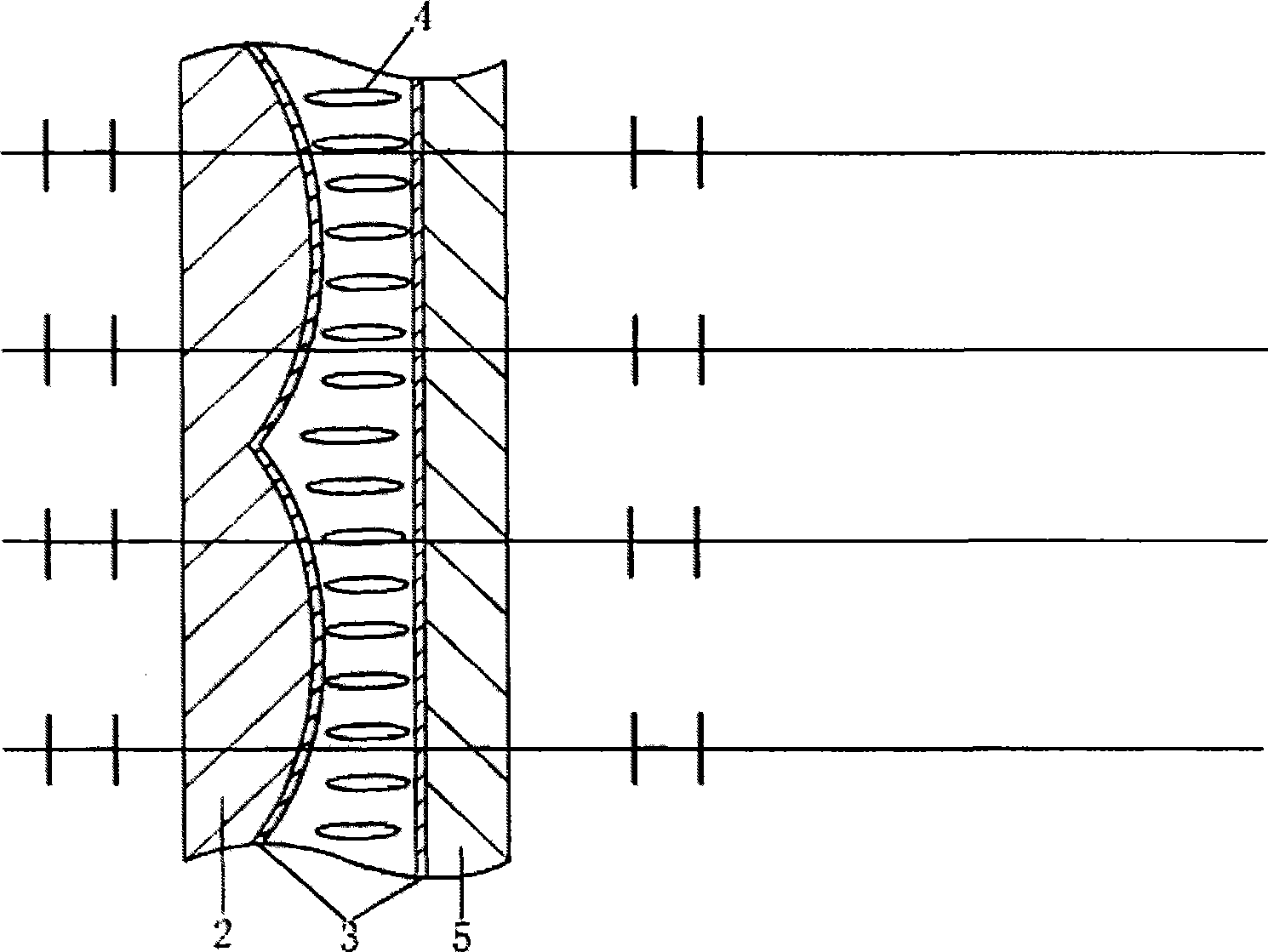2D-3D convertible stereo display device
A technology for stereoscopic display devices and display panels, applied in stereoscopic systems, static indicators, optics, etc., can solve the problems of long response time, difficult process, and inability to control each pixel independently, and achieve fast conversion speed and difficult implementation low effect
- Summary
- Abstract
- Description
- Claims
- Application Information
AI Technical Summary
Problems solved by technology
Method used
Image
Examples
Embodiment (1
[0035] Embodiment (1): Figure 6 It is the structure and optical path diagram of the stereoscopic display device of the present embodiment, in which the stereoscopic display device includes: a display panel 10 for providing images, and a polarizer for selectively not rotating or rotating the polarization direction of the light provided by the display panel 10 by 90 degrees. A light conversion device, and a lens assembly composed of a single-refraction index lens and a double-refraction index lens, are used to transmit the provided image in 2D mode, and divide the incident image into a right-eye image and a left-eye image in 3D mode. The polarized light conversion device includes a thin film transistor circuit 11c (the distance between the display panel 10 and the thin film transistor circuit 11c is only schematic, mainly for marking the polarization direction of the light), as a driving electrode (equivalent to the existing TFT Display electrode in the display) ITO glass 11a, ...
Embodiment (3
[0046] Embodiment (3): Figure 8 It is the structure and light path diagram of the stereoscopic display device of this embodiment, the stereoscopic display device also includes in the figure: a display panel 10 (not shown in the figure) that provides images, and is used for selectively polarizing the direction of light provided by the display panel 10 Non-rotating or 90-degree polarized light conversion devices, and lens components composed of single-refractive-index lenses and double-refractive-index lenses, the only difference between this embodiment and embodiment (1) lies in the composition of the lens components. In this embodiment, the lens assembly includes a double refraction convex lens 17, a single refraction concave lens 18 and a glass substrate 16, and also includes an orientation layer 12c on the surface of the plane part of the birefringence convex lens 17. The convex lens 17 adopts a birefringence material, usually Select liquid crystal for use, select the optic...
PUM
 Login to View More
Login to View More Abstract
Description
Claims
Application Information
 Login to View More
Login to View More - R&D
- Intellectual Property
- Life Sciences
- Materials
- Tech Scout
- Unparalleled Data Quality
- Higher Quality Content
- 60% Fewer Hallucinations
Browse by: Latest US Patents, China's latest patents, Technical Efficacy Thesaurus, Application Domain, Technology Topic, Popular Technical Reports.
© 2025 PatSnap. All rights reserved.Legal|Privacy policy|Modern Slavery Act Transparency Statement|Sitemap|About US| Contact US: help@patsnap.com



